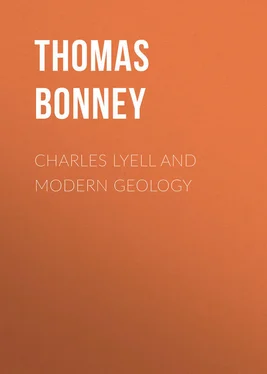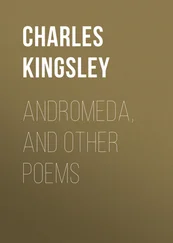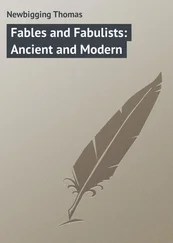Thomas Bonney - Charles Lyell and Modern Geology
Здесь есть возможность читать онлайн «Thomas Bonney - Charles Lyell and Modern Geology» — ознакомительный отрывок электронной книги совершенно бесплатно, а после прочтения отрывка купить полную версию. В некоторых случаях можно слушать аудио, скачать через торрент в формате fb2 и присутствует краткое содержание. ISBN: , Жанр: foreign_antique, foreign_prose, на английском языке. Описание произведения, (предисловие) а так же отзывы посетителей доступны на портале библиотеки ЛибКат.
- Название:Charles Lyell and Modern Geology
- Автор:
- Жанр:
- Год:неизвестен
- ISBN:http://www.gutenberg.org/ebooks/34502
- Рейтинг книги:5 / 5. Голосов: 1
-
Избранное:Добавить в избранное
- Отзывы:
-
Ваша оценка:
- 100
- 1
- 2
- 3
- 4
- 5
Charles Lyell and Modern Geology: краткое содержание, описание и аннотация
Предлагаем к чтению аннотацию, описание, краткое содержание или предисловие (зависит от того, что написал сам автор книги «Charles Lyell and Modern Geology»). Если вы не нашли необходимую информацию о книге — напишите в комментариях, мы постараемся отыскать её.
Charles Lyell and Modern Geology — читать онлайн ознакомительный отрывок
Ниже представлен текст книги, разбитый по страницам. Система сохранения места последней прочитанной страницы, позволяет с удобством читать онлайн бесплатно книгу «Charles Lyell and Modern Geology», без необходимости каждый раз заново искать на чём Вы остановились. Поставьте закладку, и сможете в любой момент перейти на страницу, на которой закончили чтение.
Интервал:
Закладка:
A letter to his father, also written in the month of April, shows that, while he has an immediate purpose of opening fire on MacCulloch, 16 16 Dr. John MacCulloch, author (among other works) of the "Highlands and Western Isles of Scotland." He was an excellent geologist on the mineralogical side, but had little sympathy with palæontology or with the views to which Lyell inclined. He died in 1835.
who had bitterly attacked in the Westminster Review Scrope's book upon Volcanoes, he has "come to the conclusion that something of a more scientific character is wanted, for which the pages of a periodical are not fitted." He might, he says, write an elementary book, like Mrs. Marcet's "Conversations on Chemistry," but something on a much larger scale evidently is floating on his mind. In this letter also he discusses his prospects with his father, who apparently had suggested that he should cease from going on circuit; and argues that he gains time by appearing to be engaged in a profession, for "friends have no mercy on the man who is supposed to have some leisure time, and heap upon him all kinds of unremunerative duties." Lyell was not devoid of Scotch shrewdness, and doubtless early learnt that when it is all work and no pay men see your merits through a magnifying glass, but when it comes to the question of a reward, they shift the instrument to your defects.
Gradually the plan of the future book assumed a more definite shape in his mind, as we can see from a letter to Dr. Mantell early in 1828. About this time also Murchison, with whom he was planning a long visit to Auvergne, 17 17 This district had been already explored by Mr. G. P. Scrope, the first edition of whose classic work, "The Volcanoes of Central France," was published in 1826.
appears among his correspondents. Herschel 18 18 Sir John F. W. Herschel, the second of the illustrious astronomers of that name.
tells him how he and Faraday had melted in a furnace "granite into a slag-like lava"; Hooker 19 19 Sir W. J. Hooker.
begs him to notice the connection between plants and soils as he travels; his father urges him to take his clerk with him to act as amanuensis and save his eyes, which might be affected by the glare of the sun, and to help him generally in collecting specimens and carrying the barometers. Early in the month of May he started for Paris, where he met Mr. and Mrs. Murchison, and the party left for Clermont Ferrand in a "light open carriage, with post horses." As far as Moulins the roads were bad, but as they receded from Paris and approached the mountains "the roads and the rates of posting improved, so that we averaged nine miles an hour, and the change of horses [was] almost as quick as in England. The politeness of the people has much delighted us, and they are so intelligent that we get much geology from them." Clermont Ferrand became their headquarters for some time, and Lyell's letters to his father are full of notes on the geology of the district, one of the most interesting in Europe. The great plateau which rises on the western side of the broad valley of the Allier is studded with cones and craters – some so fresh that one might imagine their last eruptions to have happened during the decline of the Roman empire; 20 20 Certain passages in a letter of Sidonius Apollinaris, Bishop of Clermont, dated about 460 A.D., and in the works of Alcimus Avitus, Archbishop of Vienne, about half a century later, have been interpreted as referring to volcanic eruptions somewhere in Auvergne. This, however, is disputed by many authorities. (See Geological Magazine , 1865, p. 241.)
others in almost every stage of dissection by the scalpels of nature. Streams of lava, still rough and clinkery, have poured themselves over the plateau and have run down the valleys till they have reached the plain of the Allier, while huge fragments of flows far larger and more ancient have been carved by the action of rain and rivers into natural bastions, and now may be seen resting upon stratified marls, crowded with freshwater shells and other organisms, – the remnants of deposits accumulated in great lakes, which had been already drained in ages long before man appeared on the earth.
The two geologists worked hard, for who could be idle in such a country as this? They often began at six in the morning and rested not till evening, though the summers are hot in Auvergne, and this one was exceptionally so. Lyell writes home, "I never did so much real geology in so many days." Mrs. Murchison also was "very diligent, sketching, labelling specimens, and making out shells, in which last she is a valuable assistant." Sometimes they went farther afield, visiting Pontgibaud and the gorge of the Sioul, where they found a section previously unnoticed, which gave them a clear proof that a lava-stream had dammed up the course of a river by flowing down into its valley, and had converted the part above into a lake. This again had been drained as the river had carved for itself a new channel, partly in the basalt, partly in the underlying gneiss. Here, then, was a clear proof that a river could cut out a path for itself, and that forces still in operation were sufficient, given time enough, to sculpture the features of the earth's crust. Notwithstanding the hard work, the outdoor life suited Lyell, who writes that his "eyes were never in such condition before." Murchison, too, was generally in good health, but would have been better, according to his companion, if he had been a little more abstemious at table and a worse customer to the druggist.
From Clermont Ferrand the travellers moved on to the Cantal, where they investigated the lacustrine deposits beneath the lava-streams all around Aurillac. These deposits exhibited on a grand scale the phenomena which Lyell had already observed on a small one in the marls of the loch at Kinnordy. Thence they went on through the Ardêche and examined the "pet volcanoes of the Vivarais," as they had been termed by Scrope. The Murchisons now began to suffer from the heat, for it was the middle of July. Nevertheless, they still pushed on southwards, and after visiting the old towns of Gard and the Bouches du Rhône, went along the Riviera to Nice, having been delayed for a time at Fréjus, where Murchison had a sharp attack of malarious fever. It was an exceptionally dry summer, and the town in consequence was malodorous; so after a short halt, they moved on to Milan and at last arrived at Padua, working at geology as they went along, and constantly accumulating new facts. From Padua they visited Monte Bolca, noted for its fossil fish, the Vicentin, with its sheets of basalt, and the Euganean Hills, where the "volcanic phenomena [were] just Auvergne over again." Then the travellers parted, the Murchisons turning northward to the Tyrol, while Lyell continued on his journey southward to Naples and Sicily.
Some four months had now been spent, almost without interruption, in hard work and the daily questioning of Nature. The results had surpassed even Lyell's anticipations; they had thrown light upon the geological phenomena of the remote past, and cleared up many difficulties which, hitherto, had impeded the path of the investigators. On the coast of the Maritime Alps Lyell had found huge beds of conglomerate, parted one from another by laminated shales full of fossils, most of which were identical with creatures still living in the Mediterranean. These masses attained a thickness of 800 feet, and were displayed in the sides of a valley fifteen miles in length. They supplied a case parallel with that of the conglomerates and sandstones of Angus, and indicated that no extraordinary conditions – no deluges or earth shatterings – had been needed in order to form them. If the torrents from the Maritime Alps, as they plunged into the Mediterranean, could build up these masses of stratified pebbles, why not appeal to the same agency in Scotland, though the mountains from which they flowed, and the sheet of water into which they plunged, have alike vanished? The great flows of basalt – some fresh and intact, some only giant fragments of yet vaster masses – the broken cones of scoria, and the rounded hills of trachyte in Auvergne, had supplied him with links between existing volcanoes and the huge masses of trap with which Scotland had made him familiar; while these basalt flows – modern in a geological sense, but carved and furrowed by the streams which still were flowing in their gorges – showed that rain and rivers were most potent, if not exclusive, agents in the excavation of valleys. "The whole tour," thus he wrote to his father, "has been rich, as I had anticipated (and in a manner which Murchison had not), in those analogies between existing nature and the effects of causes in remote eras which it will be the great object of my work to point out. I scarcely despair now, so much do these evidences of modern action increase upon us as we go south (towards the more recent volcanic seat of action) of proving the positive identity of the causes now operating with those of former times." 21 21 Life, Letters, and Journals, vol. i. p. 199.
Интервал:
Закладка:
Похожие книги на «Charles Lyell and Modern Geology»
Представляем Вашему вниманию похожие книги на «Charles Lyell and Modern Geology» списком для выбора. Мы отобрали схожую по названию и смыслу литературу в надежде предоставить читателям больше вариантов отыскать новые, интересные, ещё непрочитанные произведения.
Обсуждение, отзывы о книге «Charles Lyell and Modern Geology» и просто собственные мнения читателей. Оставьте ваши комментарии, напишите, что Вы думаете о произведении, его смысле или главных героях. Укажите что конкретно понравилось, а что нет, и почему Вы так считаете.












